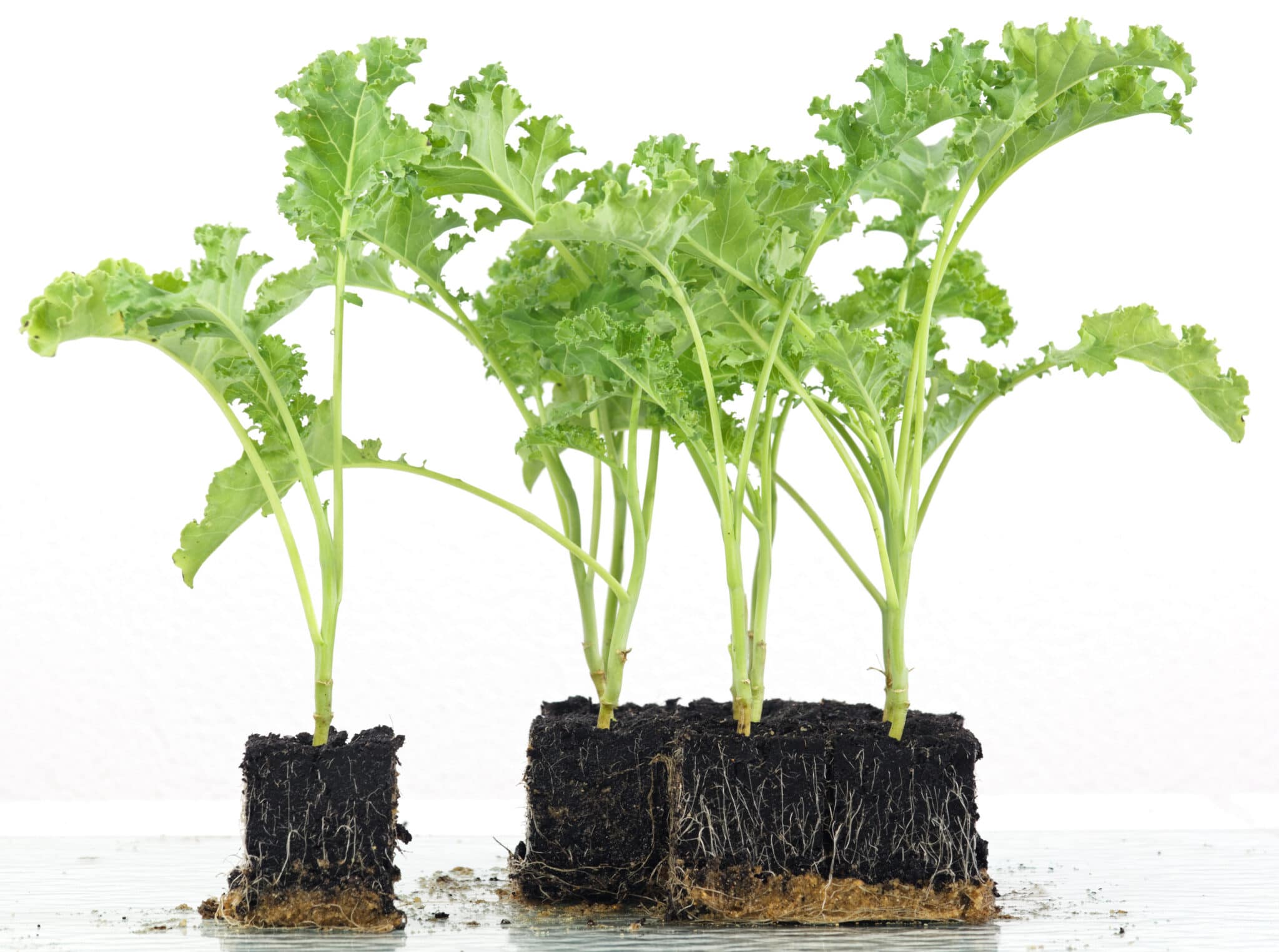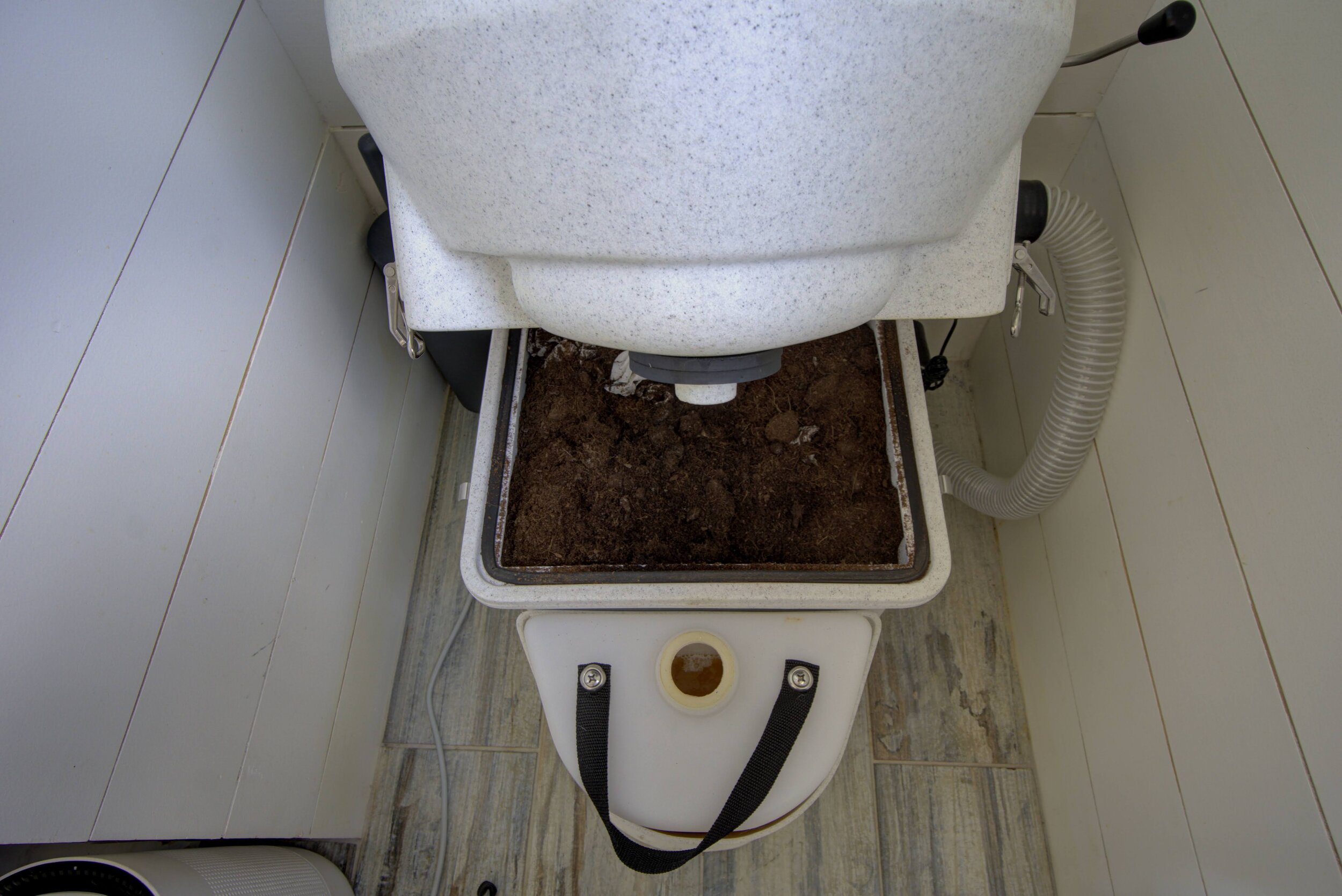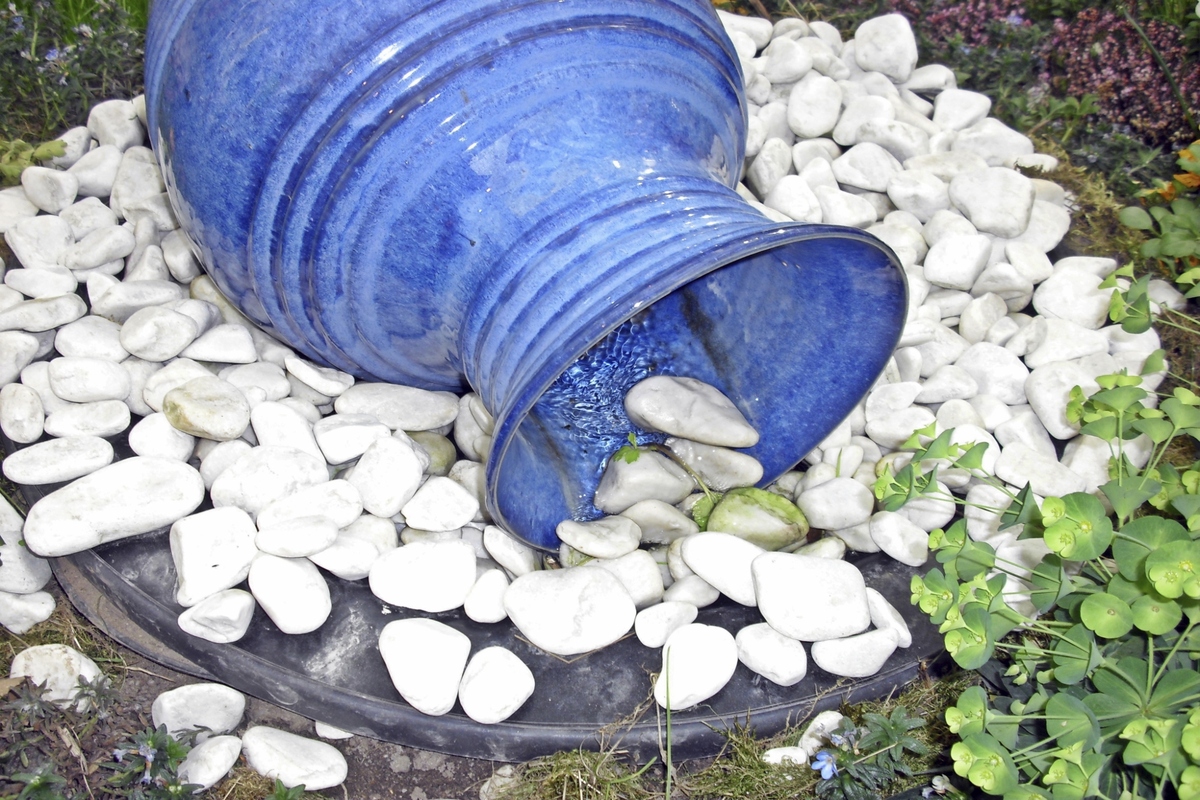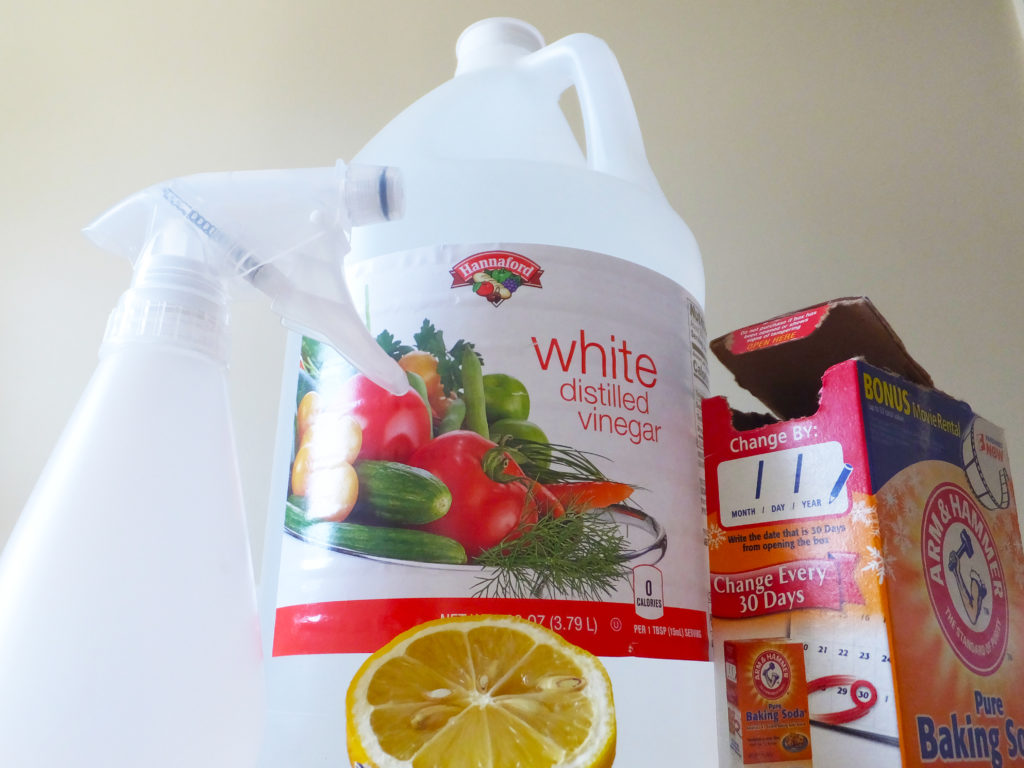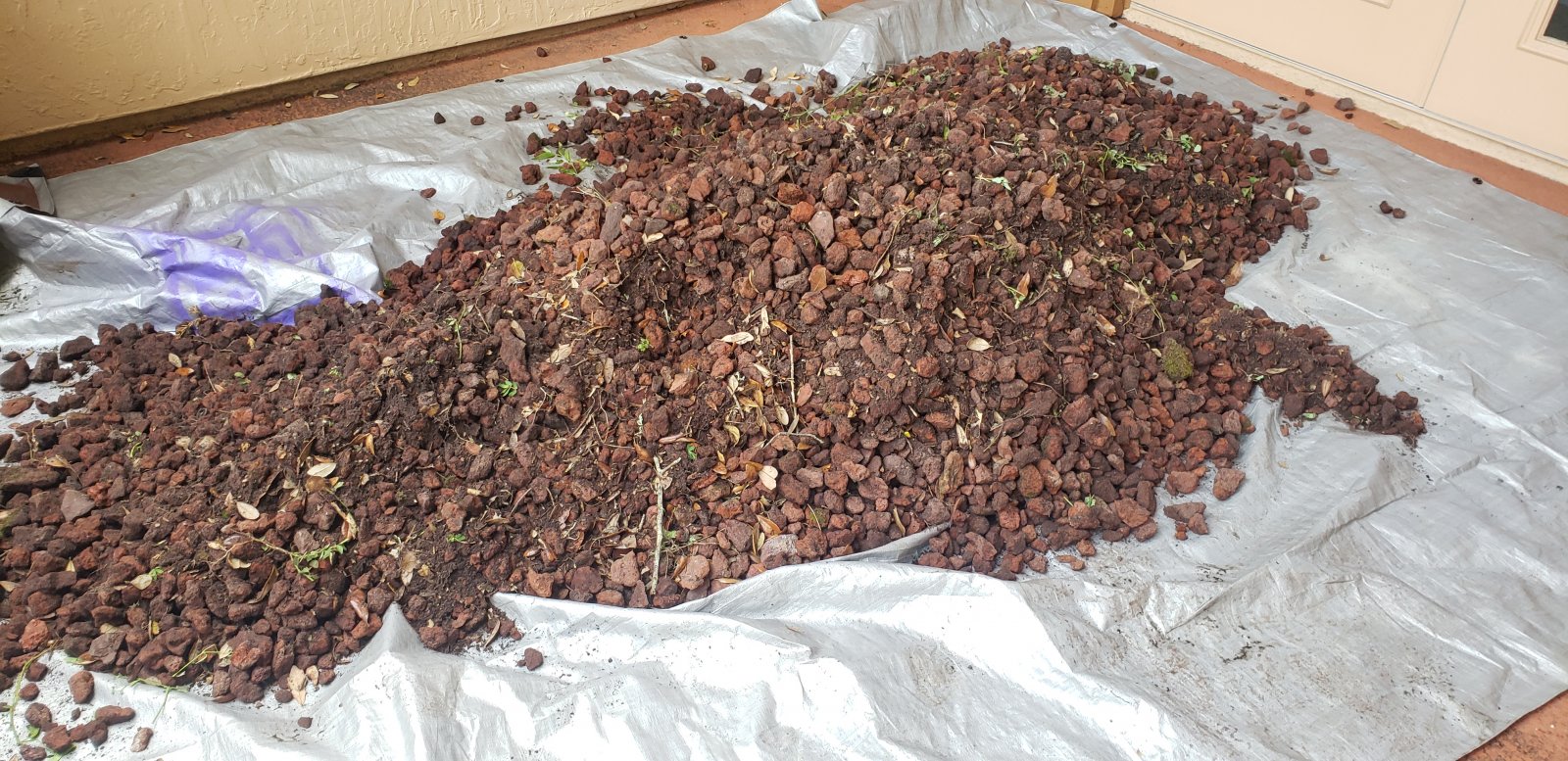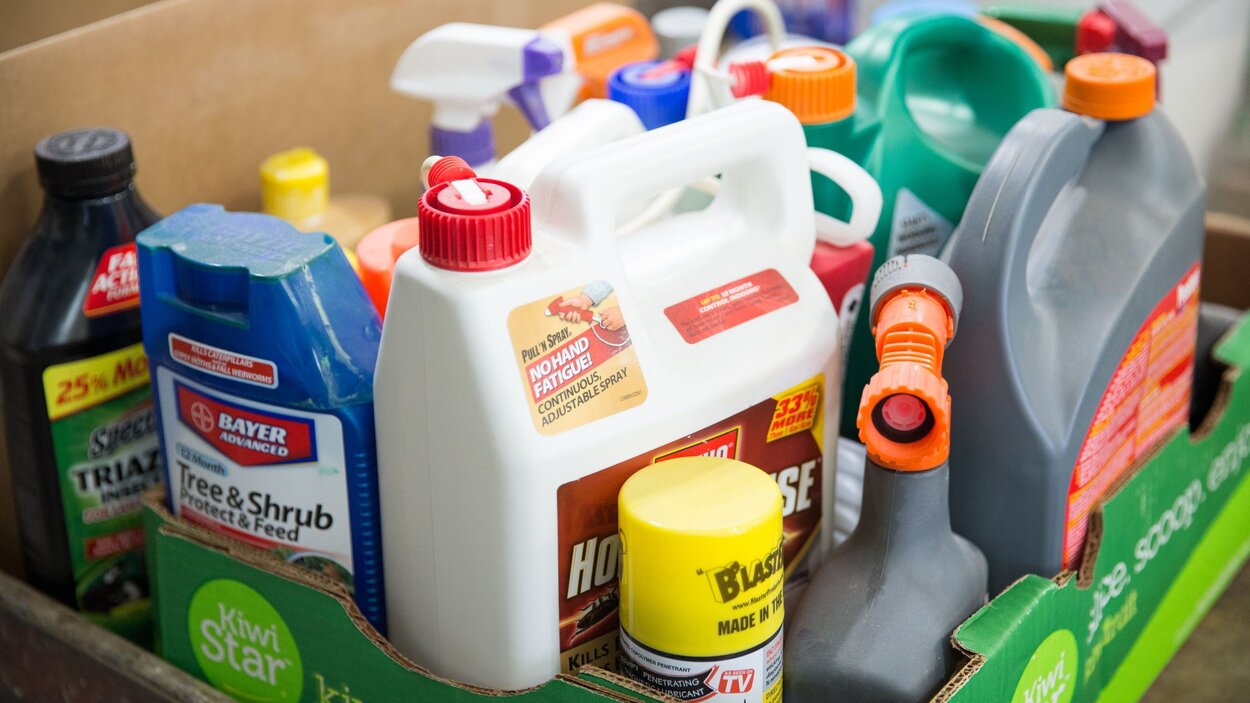Home>Gardening News and Trends>Latest News>How To Clean Kale From Pesticides


Latest News
How To Clean Kale From Pesticides
Modified: January 22, 2024
Learn how to clean kale from pesticides in the latest news. Protect your health by following these easy steps to remove harmful chemicals from your greens.
(Many of the links in this article redirect to a specific reviewed product. Your purchase of these products through affiliate links helps to generate commission for Chicagolandgardening.com, at no extra cost. Learn more)
Table of Contents
Introduction
Kale, with its vibrant green leaves and numerous health benefits, has gained immense popularity in recent years. It is packed with essential vitamins, minerals, and antioxidants that promote overall well-being. However, like many other leafy greens, kale is often subject to pesticide residue, which can be harmful if consumed regularly.
Understanding how to properly clean kale from pesticides is essential to ensure the safety and healthiness of this nutritious vegetable. Pesticides are chemical substances used to repel or kill pests that can damage crops. While they are undoubtedly useful in ensuring high crop yields, pesticide residues can pose potential health risks when ingested. Therefore, it is crucial to take steps to remove or minimize pesticide residues on kale before consuming it.
In this article, we will guide you through the importance of cleaning kale from pesticides and provide a step-by-step guide on how to do so effectively. We will also explore different methods, such as soaking kale in water, using a vinegar solution, using baking soda wash, and using commercial vegetable washes. Additionally, we will share precautions to take while cleaning kale to ensure maximum safety.
By following the techniques outlined in this article, you can confidently enjoy the numerous health benefits of kale without worrying about the potential risks associated with pesticide residues. Let’s dive in and learn how to clean kale from pesticides!
Understanding Pesticide Residue on Kale
Pesticide residue refers to the small amounts of pesticide chemicals that remain on fruits and vegetables, even after they have been harvested and processed. These residues can remain on the surface of the plants, including the leaves of kale, and can pose potential health risks if ingested.
The use of pesticides in conventional agriculture is a common practice to protect crops from pests, diseases, and weeds. While pesticides play a crucial role in ensuring high crop yields, they can also leave behind residues on the produce. Pesticide residues can stem from several sources, including pesticide drift from neighboring fields, direct application during cultivation, or residues that persist in the soil. Additionally, some pesticides may be used specifically to prolong the shelf life of the produce.
When kale is grown conventionally, it may be exposed to pesticides at various stages of its growth, such as during seed treatment, growth, and pre-harvest. This exposure can result in the presence of pesticide residues on the leaves. These residues can include insecticides, herbicides, fungicides, and other types of pesticides.
It is important to note that while organic farming practices restrict the use of synthetic pesticides, organic kale can still have pesticide residues. This can occur due to the proximity of organic fields to conventional fields or through natural sources, such as pesticides present in the environment.
The presence of pesticide residue on kale can have potential health implications. Pesticides are designed to be toxic to pests, and their effects on humans can vary. Some pesticides have been linked to adverse health effects, including neurotoxicity, hormone disruption, and even cancer. Additionally, certain populations, such as pregnant women, infants, and children, may be more susceptible to the harmful effects of pesticide exposure.
Therefore, it is crucial to take steps to minimize pesticide residues on kale before consuming it. Properly cleaning kale can help reduce the exposure to pesticide residues and ensure the safety of your meal.
Importance of Cleaning Kale from Pesticides
Given the potential health risks associated with pesticide residue on kale, it is essential to understand the importance of cleaning this leafy green before consuming it. Cleaning kale helps to remove or reduce pesticide residues, ensuring a safer and healthier eating experience. Here are a few key reasons why cleaning kale from pesticides is crucial:
1. Minimizing Health Risks: Pesticide residues on kale can pose potential health hazards if ingested regularly. By cleaning kale thoroughly, you can significantly reduce your exposure to these residues and minimize the risk of adverse health effects. This is particularly important for vulnerable populations, such as children, pregnant women, and individuals with compromised immune systems.
2. Promoting Overall Well-being: Kale is known for its numerous health benefits, including its high content of vitamins, minerals, and antioxidants. By cleaning kale from pesticides, you can ensure that you are reaping the full benefits of this nutrient-dense vegetable without the added risks of pesticide exposure. A cleaner kale translates to a healthier you.
3. Organic and Sustainable Eating: If you choose to consume organic kale, cleaning it is still essential. While organic farming practices restrict the use of synthetic pesticides, organic produce can still be exposed to pesticides from neighboring conventional farms or natural sources. Cleaning organic kale ensures that you are adhering to a more sustainable and environmentally-friendly approach to your food choices.
4. Peace of Mind: When you clean kale from pesticides, you can have peace of mind knowing that you have taken the necessary steps to minimize your exposure to potentially harmful substances. This allows you to enjoy your kale dishes without worrying about the potential health risks associated with pesticide residues.
Incorporating the practice of cleaning kale from pesticides into your routine is a simple yet effective way to prioritize your health and well-being. By removing or reducing pesticide residues, you can enjoy the nutritional benefits of kale with confidence. Now, let’s explore some methods for cleaning kale in the following sections.
Step-by-Step Guide to Clean Kale
Cleaning kale from pesticides involves a few simple steps to ensure thorough cleaning and removal of any potential residues. Follow this step-by-step guide to clean your kale effectively:
- Start by filling a clean sink or large bowl with cold water. Make sure there is enough water to fully submerge the kale leaves.
- Separate the individual kale leaves from the stems, discarding any damaged or discolored leaves.
- Place the kale leaves in the water and swish them around gently to loosen any dirt, debris, or pesticide residues. Allow the leaves to soak for a few minutes.
- After soaking, remove the kale leaves from the water and rinse them under cold running water. This step helps to wash away any remaining dirt or residues.
- Inspect the kale leaves, focusing on the crevices and folds, as pesticide residues can easily collect in these areas. If you notice any remaining dirt or residues, gently rub the leaves with your fingers or use a soft brush to ensure thorough cleaning.
- Once you are satisfied with the cleanliness of the kale leaves, pat them dry with a clean kitchen towel or use a salad spinner to remove excess water.
- Alternatively, you can also let the kale leaves air dry on a clean, dry kitchen towel or paper towels.
Following these simple steps will help ensure that your kale is thoroughly cleaned and ready to be used in your favorite recipes. It is important to note that these steps are effective for removing dirt and some pesticide residues on the surface of the leaves. However, if you prefer an extra level of cleaning, you can consider using additional methods or solutions, which we will discuss in the following sections.
Now that you have learned the basic steps to clean kale, let’s explore a few different methods that can further assist in reducing pesticide residues.
Method 1: Soaking Kale in Water
Soaking kale in water is a simple and effective method to remove dirt, debris, and some pesticide residues. Here’s how to use this method:
- Fill a clean sink or large bowl with cold water.
- Separate the kale leaves from the stems and submerge them in the water.
- Gently swish the leaves around, ensuring that they are fully immersed in the water. This helps dislodge any dirt or residues.
- Allow the kale leaves to soak in the water for about 5 to 10 minutes. This soak helps to loosen any stubborn residues.
- After the soak, remove the kale leaves from the water and rinse them thoroughly under cold running water. This rinsing step helps wash away any remaining dirt or residues.
- Inspect the kale leaves and repeat the soaking and rinsing process if necessary, especially if you notice any visible debris or residues.
- Once you are satisfied with the cleanliness of the kale leaves, pat them dry with a clean kitchen towel or use a salad spinner to remove excess water.
Soaking kale in water is a gentle and effective method to eliminate dirt and some pesticide residues from the surface of the leaves. However, it is important to note that this method may not be as effective in removing certain types of pesticide residues that have penetrated deeper into the leaves. In such cases, alternative methods or solutions may be more appropriate.
Now that you are familiar with soaking kale in water, let’s explore another method using a vinegar solution in the next section.
Method 2: Using Vinegar Solution
Using a vinegar solution is an effective method for cleaning kale and removing pesticide residues. Vinegar, specifically white vinegar, acts as a natural cleanser and can help eliminate certain types of pesticides. Here’s how to use this method:
- Fill a clean sink or large bowl with cold water.
- Add 1 part white vinegar to 3 parts water to create a vinegar solution. The amount of solution needed will depend on the quantity of kale you are cleaning.
- Separate the kale leaves from the stems and submerge them in the vinegar solution.
- Gently swish the leaves around in the vinegar solution, ensuring that they are fully coated. This allows the vinegar to penetrate the leaves and aid in removing pesticide residues.
- Allow the kale leaves to soak in the vinegar solution for about 5 to 10 minutes.
- After the soak, remove the kale leaves from the vinegar solution and rinse them thoroughly under cold running water to remove any vinegar residue.
- Inspect the kale leaves and repeat the soaking and rinsing process if necessary.
- Once you are satisfied with the cleanliness of the kale leaves, pat them dry with a clean kitchen towel or use a salad spinner to remove excess water.
Using a vinegar solution can effectively help in reducing pesticide residues on kale. Vinegar’s acidity and natural cleansing properties make it a suitable option for removing certain types of pesticides. However, it is important to note that this method may not completely eliminate all pesticide residues, especially those that have deeply penetrated the leaves or are resistant to acidic solutions.
Now that you are familiar with using a vinegar solution, let’s explore another method using baking soda wash in the next section.
Method 3: Baking Soda Wash
Using a baking soda wash is another effective method to clean kale and remove pesticide residues. Baking soda, also known as sodium bicarbonate, acts as a natural cleaner and can help eliminate certain types of pesticides. Here’s how to use this method:
- Fill a clean sink or large bowl with cold water.
- Add 1-2 teaspoons of baking soda to the water and stir to dissolve.
- Separate the kale leaves from the stems and submerge them in the baking soda solution.
- Gently swish the leaves around in the baking soda solution, ensuring that they are fully coated. This allows the baking soda to help remove pesticide residues.
- Allow the kale leaves to soak in the baking soda solution for about 5 to 10 minutes.
- After the soak, remove the kale leaves from the baking soda solution and rinse them thoroughly under cold running water.
- Inspect the kale leaves and repeat the soaking and rinsing process if necessary.
- Once you are satisfied with the cleanliness of the kale leaves, pat them dry with a clean kitchen towel or use a salad spinner to remove excess water.
Using a baking soda wash can effectively assist in reducing pesticide residues on kale. Baking soda’s alkaline nature helps to break down certain types of pesticides, making it an excellent natural option for cleaning produce. However, it is important to note that this method may not completely eliminate all pesticide residues, especially those that have deeply penetrated the leaves or are resistant to alkaline solutions.
Now that you are familiar with the baking soda wash method, let’s explore another method using commercial vegetable wash in the next section.
Method 4: Commercial Vegetable Wash
Using a commercial vegetable wash is a convenient and effective method for cleaning kale and removing pesticide residues. These commercial washes are specifically formulated to help eliminate dirt, bacteria, and certain types of pesticides. Here’s how to use this method:
- Follow the instructions provided on the bottle of the commercial vegetable wash you have chosen. Different brands may have different guidelines for dilution and usage.
- Fill a clean sink or large bowl with the appropriate amount of water as instructed on the product label.
- Separate the kale leaves from the stems and submerge them in the diluted vegetable wash solution.
- Gently swish the leaves around, ensuring that they are fully coated with the solution. This allows the vegetable wash to work on removing pesticide residues.
- Follow the recommended soaking time provided on the product label. It is typically around 5 to 10 minutes.
- After the recommended soaking time, remove the kale leaves from the vegetable wash solution and rinse them thoroughly under cold running water.
- Inspect the kale leaves and repeat the soaking and rinsing process if necessary.
- Once you are satisfied with the cleanliness of the kale leaves, pat them dry with a clean kitchen towel or use a salad spinner to remove excess water.
Using a commercial vegetable wash provides a convenient and reliable option for cleaning kale and reducing pesticide residues. These washes are specifically designed to help remove various contaminants, including certain types of pesticides, ensuring a clean and safe eating experience. However, it is important to note that not all commercial vegetable washes are created equal, and their effectiveness may vary depending on the specific brand and formulation.
Now that you are familiar with the method of using a commercial vegetable wash, let’s move on to exploring some precautions to take while cleaning kale in the next section.
Precautions to Take While Cleaning Kale
While cleaning kale from pesticides, it is important to keep a few precautions in mind to ensure maximum safety and effectiveness. Here are some precautions to take while cleaning kale:
- Choose Organic Kale: If possible, opt for organic kale. Organic farming practices restrict the use of synthetic pesticides, reducing the risk of pesticide residues. However, remember that organic kale can still have pesticide residues from various sources, so cleaning is still necessary.
- Wash Hands: Before handling kale, make sure to wash your hands thoroughly with soap and water. This helps prevent any potential contaminants from transferring to the kale leaves during the cleaning process.
- Inspect the Leaves: Before cleaning, inspect the kale leaves for any signs of damage, decay, or pests. Discard any leaves that appear spoiled or compromised.
- Use Clean Equipment: Ensure that the sink, bowl, kitchen towels, salad spinner, or any other equipment used to clean kale is clean and free from any potential contaminants.
- Don’t Forget the Stems: While most pesticide residues accumulate on the leaves, residues can also be present on the stems. Clean the stems by running them under cold water and gently rubbing them with your fingers.
- Thoroughly Rinse: After using any cleaning method, it is essential to rinse the kale leaves thoroughly under cold running water to remove any remaining cleaning solution, dirt, or residues.
- Proper Storage: Once the kale is cleaned and dried, store it in a breathable produce bag or wrap it loosely in a clean kitchen towel and place it in the refrigerator. Proper storage helps maintain the freshness and quality of the cleaned kale.
- Buy Fresh Kale: Choose fresh kale to ensure better taste and quality. Fresher kale is more likely to have lower pesticide residues.
- Follow Package Instructions: If you are using a commercial vegetable wash, make sure to carefully read and follow the instructions provided on the product label.
- Personal Sensitivities: If you have known allergies, sensitivities, or specific dietary requirements, consult with your healthcare provider to ensure appropriate cleaning methods for your specific situation.
By following these precautions, you can enhance the effectiveness of kale cleaning methods and ensure that your cleaned kale is safe for consumption. Remember, thorough cleaning is essential to minimize pesticide residues and maximize your enjoyment of this nutritious leafy green.
Now that you are well-equipped with knowledge about cleaning kale and the necessary precautions, you can confidently prepare and enjoy your favorite kale dishes, knowing that you have taken steps to ensure their safety.
Conclusion
Cleaning kale from pesticides is an important step to ensure the safety and healthiness of this leafy green. Pesticide residues can pose potential health risks when consumed regularly, making it crucial to take measures to remove or minimize these residues before enjoying kale in your meals.
In this article, we discussed the significance of cleaning kale from pesticides and provided a step-by-step guide to effectively cleaning this nutritious vegetable. We explored various methods, including soaking kale in water, using a vinegar solution, utilizing a baking soda wash, and employing commercial vegetable washes.
We also highlighted the precautions to take while cleaning kale, such as choosing organic kale, inspecting the leaves, using clean equipment, and properly storing the cleaned kale. These precautions contribute to a safer and healthier cleaning process.
By following the techniques discussed in this article, you can confidently enjoy the numerous health benefits of kale without worrying about the potential risks associated with pesticide residues. Thoroughly cleaned kale ensures that you are maximizing the nutritional benefits while minimizing potential pesticide exposure.
Remember, while cleaning kale helps in reducing pesticide residues, it may not eliminate all traces of pesticides. Additionally, it is important to note that individual sensitivities and dietary requirements may vary. If you have specific concerns or allergies, it’s best to consult with a healthcare professional to ensure appropriate cleaning methods for your situation.
By prioritizing the practice of cleaning kale from pesticides, you are making a conscious effort to prioritize your health and well-being. So go ahead, incorporate cleaned kale into your favorite recipes, and reap the nutritional benefits of this vibrant and nutrient-dense vegetable!


